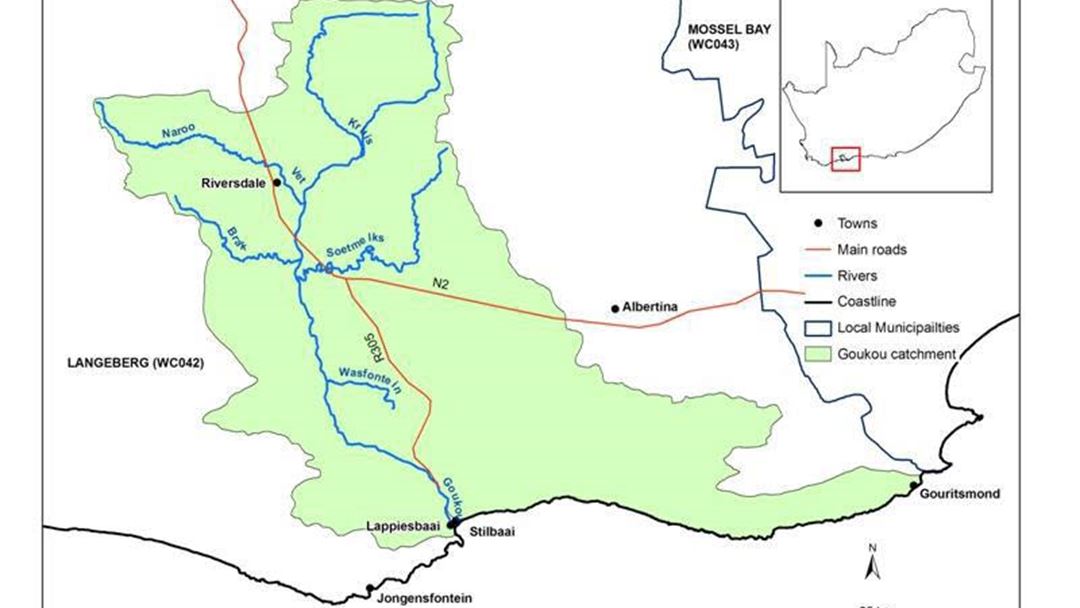Case South Africa
South African case study: The potential of managed aquifer recharge (MAR) in the Goukou catchment as supplementary, sustainable water source
Problem
Towns along the South African South Coast are increasingly experiencing water management challenges, as the existing surface water supplies are often not sufficient anymore to cater for both farming and drinking water supplies. This can be attributed to climate change, causing less regular but more intense rainfall events in a region that traditionally receives some rain all-year; as well as a massive peak in usage over holiday periods when thousands of people flock to the coastal towns.
Many of the small towns along the coast are served mainly by coastal aquifers, but exact knowledge of the capacity and quality of these are not sufficient to inform sustainable management of the resource. Stilbaai in particular is a challenge for the local municipality as the town continues to grow in both permanent residents and tourism. The town is situated in the Goukou River catchment and the Hessequa municipal district.

Intervention
The South African case study will follow a holistic approach to investigate the potential of managed aquifer recharge (MAR) in the Goukou catchment as supplementary, sustainable water source for the Riversdale–Stilbaai area, considering environmental, social and economic impacts (including perceived impacts). Storing more surface water in this river is not an option as there will not be enough runoff from the mountains to fill another dam, and altering the base flow of the river further could have a detrimental impact on the ecologically sensitive estuary downstream.
Using a locally developed hydrological model, this study will set out to better understand the interaction between groundwater and surface water resources in the Goukou River system, particularly in relation to potential impacts of increased or decreased amounts of water on the ecologically important estuary and agriculture on the surrounding land. Efforts will be made to measure the importance of springs and groundwater to the base flow of the river, as very little is currently known about the various springs in the area.
The same model will be used to identify natural recharge zones. One such recharge zone will be further modelled with the French team’s MARTHE model to investigate the potential for MAR.
Additional challenges linked to the use of new or alternative water sources, namely socio-economic complexities and governance challenges, will also be investigated. Public opinion can have a significantly negative impact on any new solution should it not have been tested and appropriately introduced from the start.
